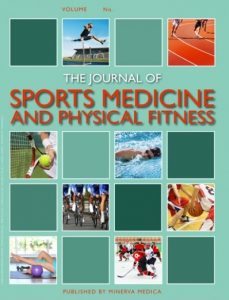Publications

Influence of lower-limb muscular and tendon mechanical properties and strength on countermovement jump performance
Authors: Maximilian M. Wdowski 1, Katarzyna Rosicka 2, Mathew Hill 1
Affiliations:
- Centre for Sport, Exercise and Life Sciences, School of Life Sciences, Coventry University, United Kingdom
- Department of Biological Sciences, Faculty of Physical Culture in Gorzow Wlkp., Poznan University of Physical Education, Gorzow Wlkp., Poland
Journal: The Journal of Sports Medicine and Physical Fitness - January 2023, Volume 63, Issue 1, Pages 16-22 (DOI: 10.23736/S0022-4707.22.13567-X)
-
Field & Applications:
- Sport
- Muscle development / Performance
- Musculoskeletal health
Background: The aim of the study is to examine the relationship between measures of muscle and tendon mechanical properties and strength on countermovement jump (CMJ) performance.
Methods: Twenty-six physically active participants (males; n = 16: females; n = 10) were tested. Testing comprised of measuring the mechanical properties of lower limb muscles and tendons using myotonometry, isometric and isokinetic knee extensor strength through dynamometry, and CMJ’s with a force platform.
Results: Large positive correlations were observed between CMJ jump height and Achilles tendon stiffness (N/m) (r=0.56) and Achilles tendon tone (Hz) (r=0.553). Large negative correlations were found between CMJ height and Achilles tendon elasticity (r=-0.658), and Achilles tendon relaxation (r=-0.572), and Achilles tendon creep (r=-0.589). Large correlations (r=0.592 to 0.659) were observed between CMJ height and all measures of isometric and isokinetic dynamometry measures. Achilles tendon stiffness, elasticity level and relaxation, and isokinetic peak concentric torque (N.m) explained 63% of this variance.
Conclusions: Greater stiffness of the Achilles tendon may improve CMJ performance due to the improved transfer of concentric and eccentric force of the knee extensor muscles. Practitioners need to implement specific interventions to target increasing Achilles tendon stiffness to improve countermovement jump performance.
Keywords: Achilles tendon, lower extremity, muscles, plyometric exercise, muscle strength
Our study potentially demonstrates that greater AT stiffness and tension is a strong predictor of CMJ performance, possibly enabling the greater transfer of concentric and eccentric force of the knee extensor muscles. Furthermore, the vastus lateralis and gastrocnemius lateralis muscle mechanics did not correlate with countermovement jump height. Myotonometry provided quick and reliable measures of the mechanical properties of tendons and muscles. These findings suggest that future interventions that specifically target increasing AT stiffness and resting tension may improve countermovement jump performance.


